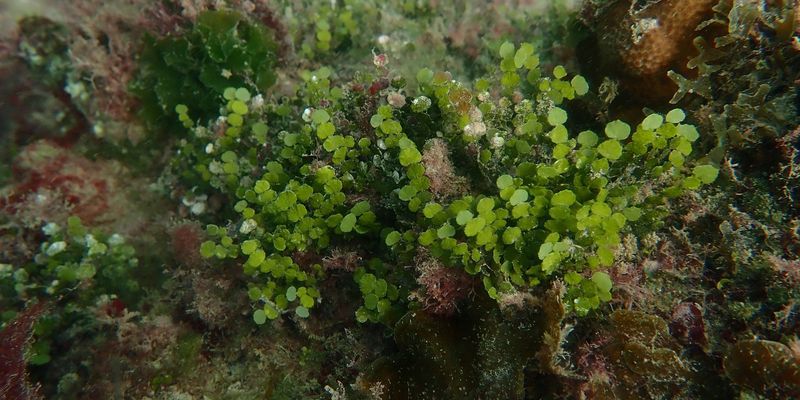Project
Assessment and update of data on marine macroalgae in HispaniolaClosed

The second largest islands of the Greater Antilles, Hispaniola is divided and occupied by two different countries: the Dominican Republic in the east and Haiti in the west, both countries sharing a coast and an insular shelf space—divided geo-politically, but ecologically indivisible.
This project seeks to make new contributions to the knowledge of the marine biodiversity of Hispaniola, updating the inventory of the marine macroalgae species (the last inventory was done by the authors in 2001), while publishing the results to GBIF. The project team will be preparing and publishing technical documents to support the new results, sharing them among binational stakeholders to support the reports and strategies of biodiversity management in both countries.
Project progress
The 2001 macroalgae inventory was critically reviewed and a new 2022 inventory was created, updating the taxonomy using WoRMS and adding 98 new taxa, found in 36 new references from the scientific literature and museum’s collections searched. The list of macroalgae species is expanded from 325 to 423 taxa. The increments by phyla are: Rhodophyta: 181 to 230; Ochrophyta: 42 to 55; Chlorophyta 102 to 138.
The new references include thirteen new US museums from the Macroalgae Herbarium Consortium Portal and also some European museums (e.g. Muséum National d'Histoire Naturelle Paris and Natural History Museum of London), following five steps:
- Relevant literature identification
- Secure institutional agreements
- Data capture
- Data management
- Data publishing: the first dataset was published on the GBIF portal with 301 new records for Dominican Republic.
GBIF project webpage was linked to the website of Programa EcoMar and the webpage was designed to facilitate the uploading of the results obtained in its main activities. The implementation of the project is being shared with the environmental authorities, the National Botanic Garden and national environmental NGOs. A conference was held with the Dominican Association of Biology Students from Universidad Autónoma de Santo Domingo.
Among the key achievements of the implementation of this project are:
- An updated database of marine benthic macroalgae from Hispaniola with 1633 new records published on GBIF. In addition, the project informed GBIF about 1043 registers, from ten north American and two European museums, that has not yet been incorporated into their databases. The contribution of the project to GBIF reaches a total number of 2675 registers.
- Publication of the second inventory of the marine benthic macroalgae from Hispaniola, with a broader coverage of the historical and current literature, a greater presence of national and international museums and updated following the fifth revision of benthic marine algae of the tropical and subtropical Western Atlantic (Wynne, 2022).
- Involvement of key biodiversity actors with information about the GBIF and the project results, through a national workshop with representatives of the main institutions, with the support of the Dominican Environmental Consortium and the Ministry of Environment and Natural Resources.
The project allowed to visualize that the GBIF projects constitute the best way to mobilize the vast information on Hispaniola's biodiversity that is not available in any international database. The lessons learned are related to the opportunity offered by GBIF tools to achieve a more comprehensive analysis of biodiversity data. Among the best practices identified are those for georeferencing biological data, how to extract and express information from publications to complete the DwC matrix and publication of data through the GBIF IPT.
Parallel to the project activities, steps are being taken to encourage the Ministry of Environment to officially join the GBIF.
